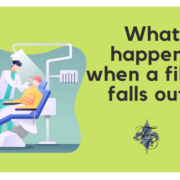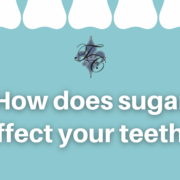What happens when a filling falls out?
How many of you has this happened to: sitting there eating, minding your own business, then feel something small, oddly-shaped, and hard in your mouth. There’s always that moment of panic, “Did I just lose a filling? Or is that something in the food?”
The good news is that usually there’s no need to panic! Be careful, though. It is possible to inadvertently inhale (which can lead to infection) or swallow the filling.
From our team at Dr. Chauvin’s office here in Lafayette, Louisiana, here’s what to do when a filling falls out.
What to do when a filling falls out
There’s no need to save the filling unless it was gold or ceramic inlay, as your dentist may be able to put those back into place.
Most dentist offices have emergency appointment slots available for things like this. It’s very important to get in as soon as possible.
Depending on the location and depth of the filling that was lost, leaving it alone for too long could cause serious problems. After all, the inside of the tooth is exposed! If the pulp gets infected, you could be looking at a root canal or extraction!
Make sure you practice extremely good dental hygiene while waiting for your appointment. Brush the hole gently to remove debris, and rinse with warm saltwater after eating to prevent food buildup.
An appointment for a filling that has fallen out
Once you get to your appointment, your dentist will take an X-ray and take a look at the tooth.
If the tooth’s integrity is still largely intact, you’ll simply need a replacement filling and be on your way. If too much of the tooth is compromised, you’ll need a crown or cap. This just depends on how old the filling was and how well you’ve taken care of your teeth in the interim.
If it’s a fairly new filling, that means the filling never bonded to the tooth properly and your dentist should replace it free of charge or at a reduced rate.
Fillings don’t last forever, and during dental checkups, your dentist can identify open margins (if the filling has begun to separate from the tooth). When a filling isn’t sealed correctly, it creates a tiny gap that bacteria can enter. This opens the door to additional cavities or infections. A cavity forming behind a filling will most likely result in a root canal.
Schedule your appointment with Dr. Chauvin today
The key is being proactive – visit your dentist for regular checkups, especially if you’ve had dental work done before. At these appointments, your dentist will determine whether a filling replacement is necessary. Have you lost a filling? Call Dr. Chauvin’s office so we can get it fixed!







